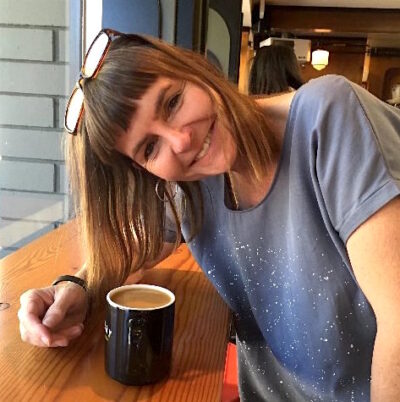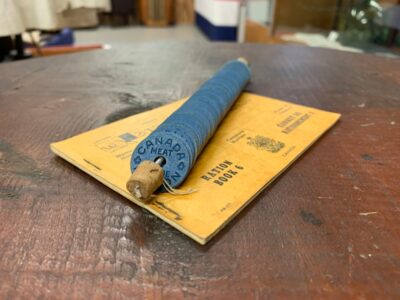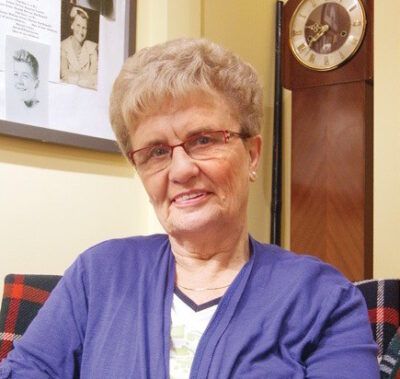1191 A walk into the past
Painted Fences
by Sara Cassidy, illustrated by Sydney Barnes
Victoria: Heritage House, 2021
$19.95 / 9781772033519
Reviewed by Valerie Green
*
 Sara Cassidy’s children’s book Painted Fences is an excellent way of offering a delightful story within a story for young children ages 8 to 12. At the same time it teaches them about the importance of history, true friendship, and hardship – and also about hope for the future. There are not many books for children that can achieve all that.
Sara Cassidy’s children’s book Painted Fences is an excellent way of offering a delightful story within a story for young children ages 8 to 12. At the same time it teaches them about the importance of history, true friendship, and hardship – and also about hope for the future. There are not many books for children that can achieve all that.
The story begins with Esther taking a walk with her great-grandfather, Afi, on his birthday. “He’s turning very old,” Esther tells the reader about her great-grandfather. They were going out for ice cream on a warm spring day when flowers are just beginning to bloom. As they pause by a fence, Afi points to a chip in the fence paint. “See the layers, Esther?” Afi says. Esther does indeed see paint layers — a whole rainbow of colours — the fence has been painted over the years.

One particular colour was avocado and Afi begins to tell his great-granddaughter a story about the two boys who painted it that colour back in 1945 using a paintbrush they sneaked from a neighbour’s shed, all because they wanted some meatballs and needed money to pay for them.
Esther doesn’t believe her great-grandfather could possibly know why and by whom the fence was painted so long ago, but she listens anyway. And thus begins a second story within a story.
The second story is a tale about two boys, Bob and Charlie, who were on their way to the meat market with wartime tokens to buy meat. On the way there they lost the tokens, which fell through a hole in one boy’s pocket.

Painted Fences admirably portrays what life was like for a child during the Second World War. Cassidy, aware that children of today would find it difficult to understand some of these hardships without explanation and adult assistance, refers to ration tokens, poverty, and the excitement of V-E Day. She also includes a subtle mention of Charlie’s limp, which might be the result of having had polio, a disease many children once had.
I particularly like the reference to their fathers who were away fighting in the war. What would they think of the boys losing their precious tokens?
“Just think how angry your dad would be if he was around,” says one boy.
“Yeah, but at least he’d be home and not a million miles away. I’m so sick of this stupid war!” replies the other.

Times were hard during the war and families relied on the ration tokens to buy their produce. The boys decided that painting fences might be a good way to make some money to buy the meat. Most of the time people just traded one thing for another during those days, but the boys needed some actual money to replace the tokens they had lost. Bob and Charlie’s adventures around the neighbourhood looking for work teach them about friendship and people’s strong spirit during those dark days.
Painting one fence earned the boys fifty cents each plus a pair of second-hand boots, milk, and cookies, and at the same time taught them the joy of working together for a good purpose. Once they had the money they needed, they headed back to the Meat Market to buy some ground beef for meatballs. On the way there they learned that the war had just ended. Not only was it Bob’s birthday, it was also V-E Day, which meant Victory in Europe. Their fathers would soon be coming home. Excitement was in the air.
The book now returns to the future with Esther and Afi on their walk, and Esther suddenly realizes that her great-grandfather was one of the boys in his story, a story that then inspires Esther to paint too. But I found the ending abrupt, and felt it needed more explanation for children.

Nonetheless, the combination of Sara Cassidy’s words and Sydney Barnes’s illustrations make for two enchanting stories for young people. Cassidy is the author of several books for young readers, many of which have received accolades and nominations for awards.
Barnes is an illustrator and graphic designer and runs a freelance design business, SJ Barnes Design. Her sepia illustrations for the 1945 story in Painted Fences admirably demonstrate the flashback to another time long ago, although her illustration of Afi today makes him seem somewhat younger than a man who was only a boy during the Second World War, and would now be well into his eighties or early nineties.
*

Valerie Green was born and educated in England where she studied journalism and law. Her passion was always writing from the moment she first held a pen in her hand. After working at the world-famous Foyles Books on Charing Cross Road, London, followed by a brief stint with M15 and legal firms, she moved to Canada in 1968 where she married and raised a family, while embarking on a long career as a freelance writer, columnist, and author of over twenty non-fiction historical and true-crime books. She is currently working on her debut novel Providence, which will be published soon as the first of The McBride Chronicles, an historical four-generational family saga bringing early BC history alive. Now semi-retired (although writers never really retire!) she enjoys taking short road trips around BC with her husband, watching their two beloved grandsons grow up and, of course, writing. Editor’s note: Valerie Green has recently reviewed books by Catherine McKenzie, Mary-Anne Neal, Vanessa Winn, Edeana Malcolm, Janie Chang, Gina McMurchy-Barber, and Eric Walters.
*
The Ormsby Review. More Books. More Reviews. More Often.
Publisher and Editor: Richard Mackie
The Ormsby Review is a journal service for in-depth coverage of B.C. books and authors. The Advisory Board consists of Jean Barman, Wade Davis, Robin Fisher, Cole Harris, Hugh Johnston, Kathy Mezei, Patricia Roy, Maria Tippett, and Graeme Wynn. Scholarly Patron: SFU Graduate Liberal Studies. Honorary Patron: Yosef Wosk. Provincial Government Patron since September 2018: Creative BC
“Only connect.” – E.M. Forster
4 comments on “1191 A walk into the past”